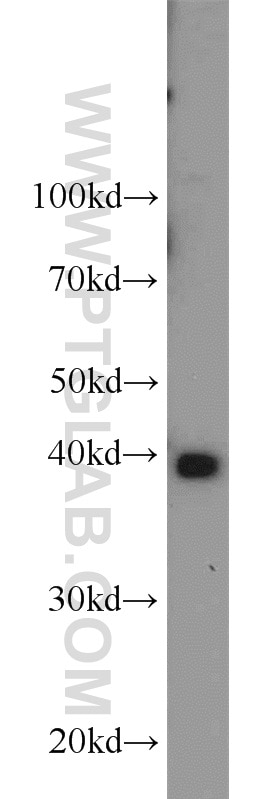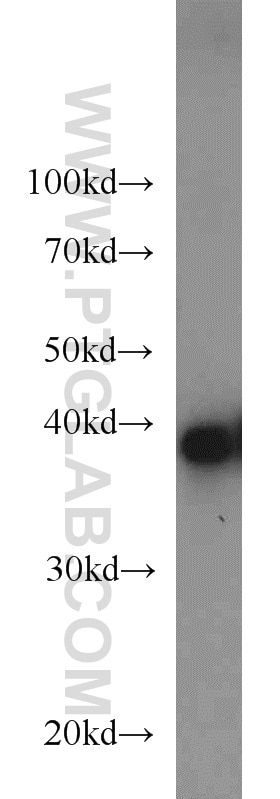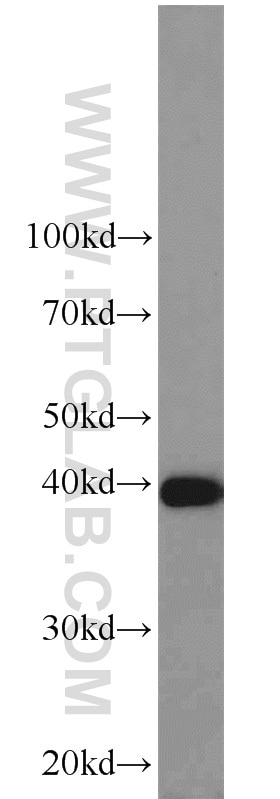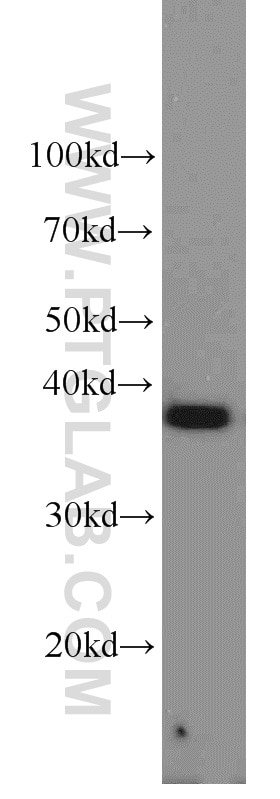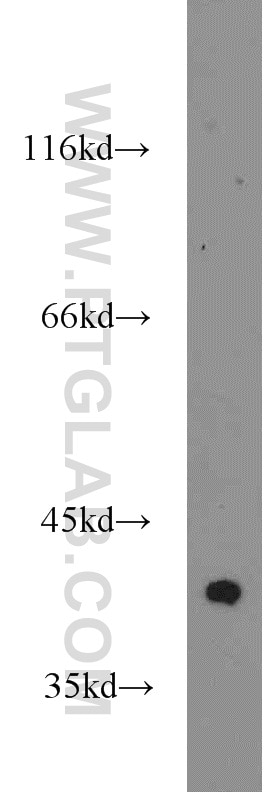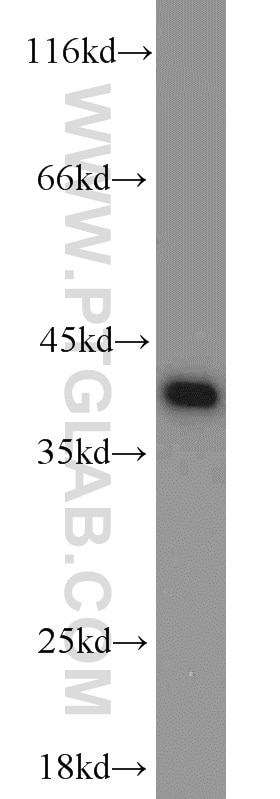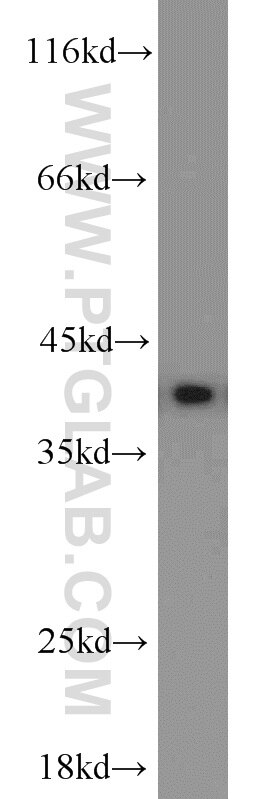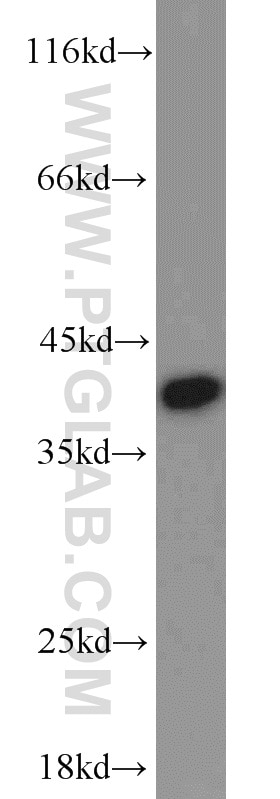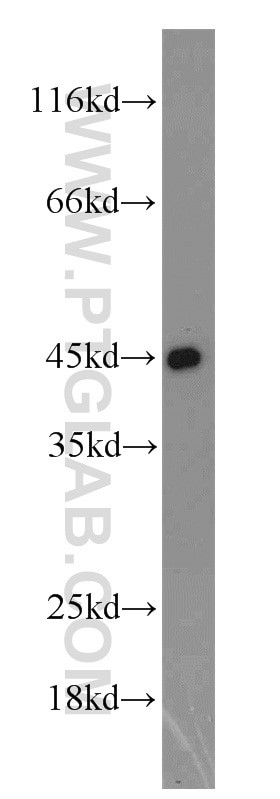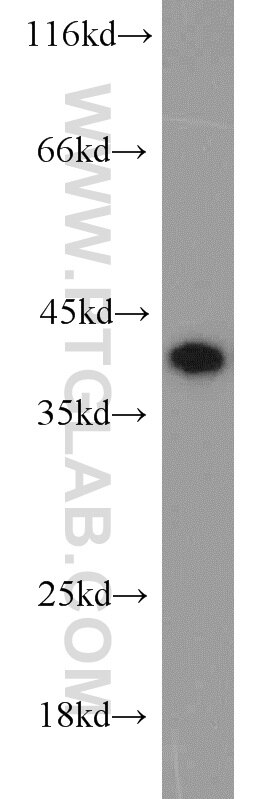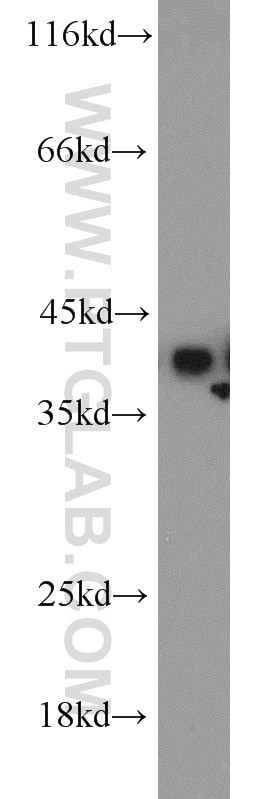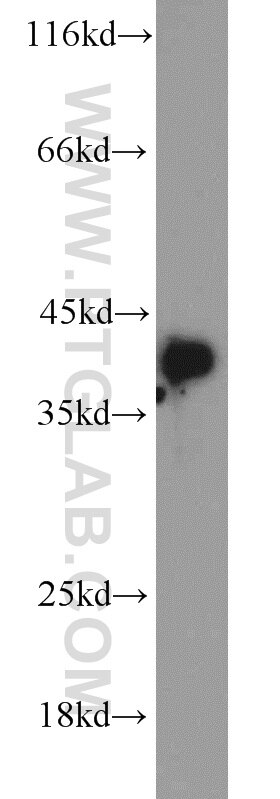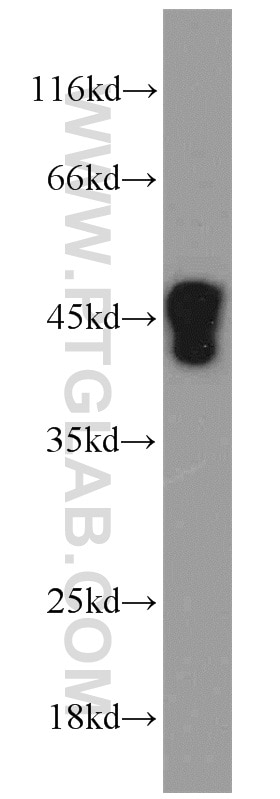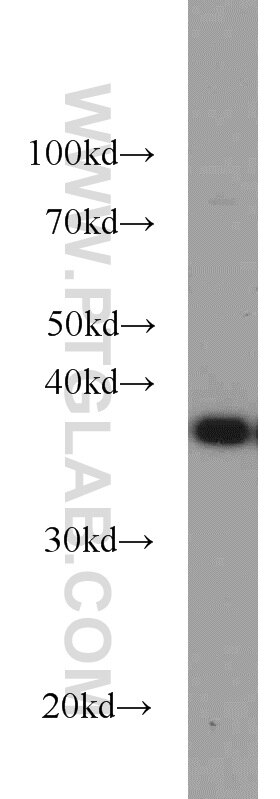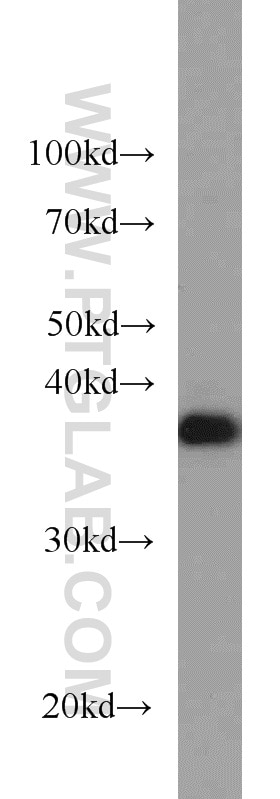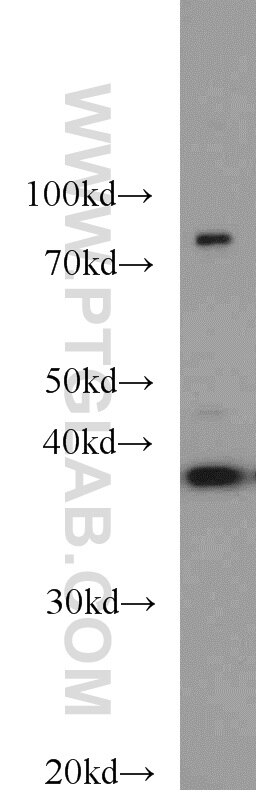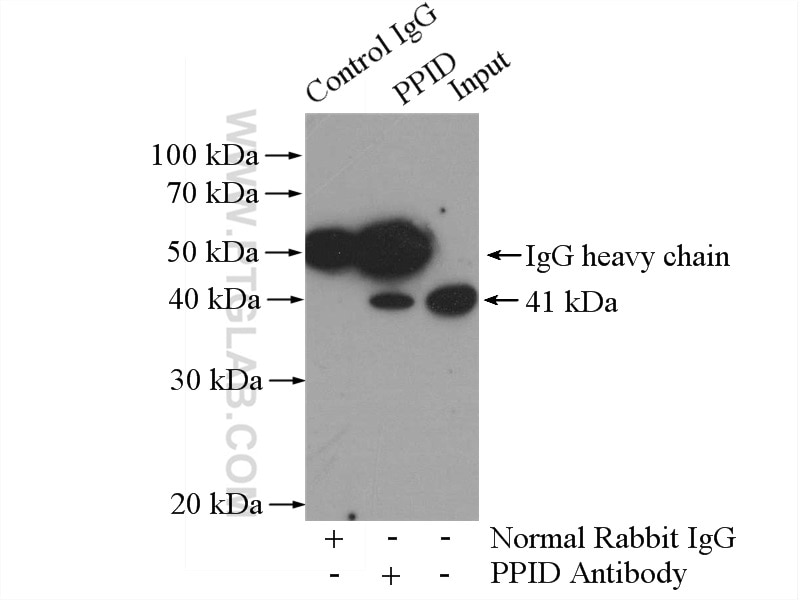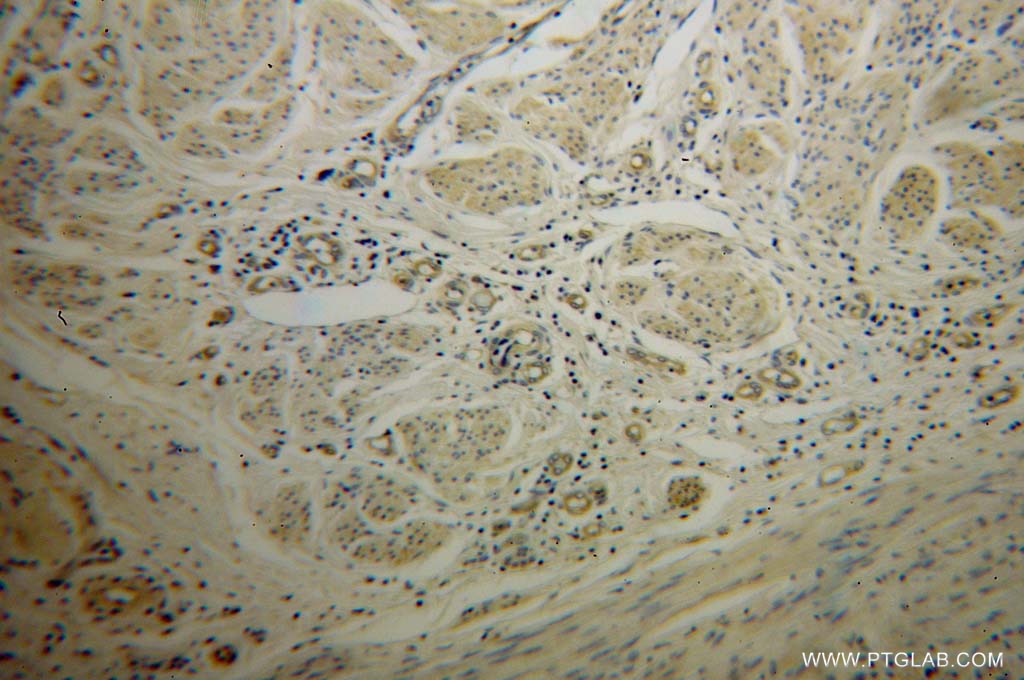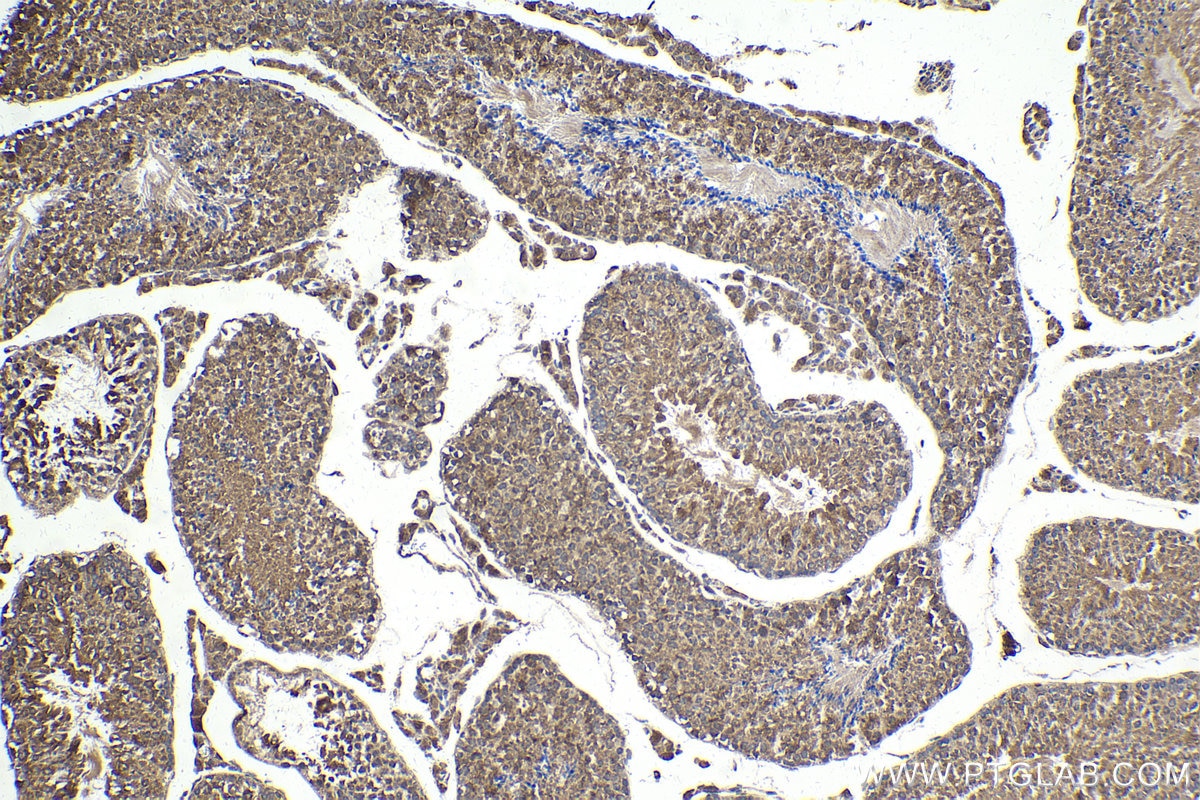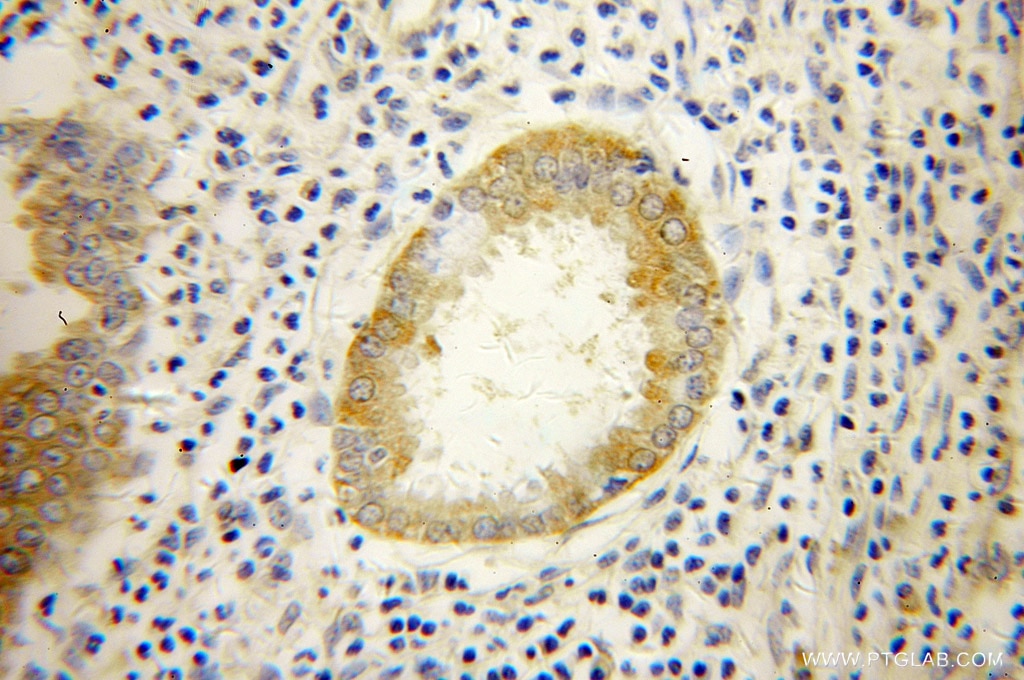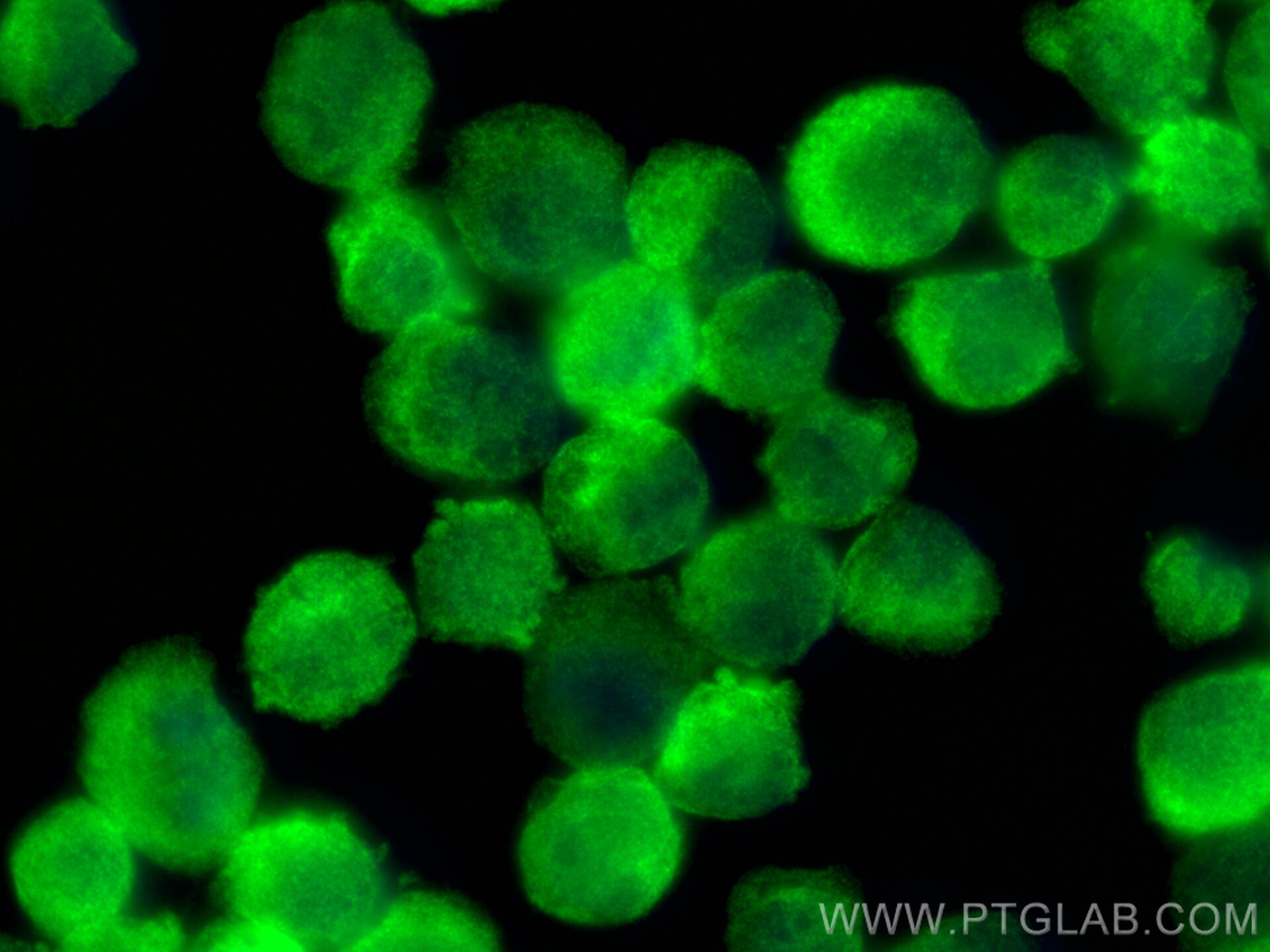Anticorps Polyclonal de lapin anti-PPID
PPID Polyclonal Antibody for WB, IHC, IF/ICC, IP, ELISA
Hôte / Isotype
Lapin / IgG
Réactivité testée
Humain, rat, souris et plus (1)
Applications
WB, IHC, IF/ICC, IP, CoIP, ELISA
Conjugaison
Non conjugué
N° de cat : 12716-1-AP
Synonymes
Galerie de données de validation
Applications testées
| Résultats positifs en WB | tissu cérébral de souris, cellules A549, cellules Jurkat, cellules MCF-7, cellules NIH/3T3, cellules Raji, tissu cérébral de rat, tissu cérébral humain |
| Résultats positifs en IP | tissu cérébral de souris |
| Résultats positifs en IHC | tissu testiculaire de souris, tissu de cancer du col de l'utérus humain il est suggéré de démasquer l'antigène avec un tampon de TE buffer pH 9.0; (*) À défaut, 'le démasquage de l'antigène peut être 'effectué avec un tampon citrate pH 6,0. |
| Résultats positifs en IF/ICC | cellules K-562, |
Dilution recommandée
| Application | Dilution |
|---|---|
| Western Blot (WB) | WB : 1:500-1:2000 |
| Immunoprécipitation (IP) | IP : 0.5-4.0 ug for 1.0-3.0 mg of total protein lysate |
| Immunohistochimie (IHC) | IHC : 1:250-1:1000 |
| Immunofluorescence (IF)/ICC | IF/ICC : 1:50-1:500 |
| It is recommended that this reagent should be titrated in each testing system to obtain optimal results. | |
| Sample-dependent, check data in validation data gallery | |
Applications publiées
| WB | See 12 publications below |
| IF | See 1 publications below |
| CoIP | See 3 publications below |
Informations sur le produit
12716-1-AP cible PPID dans les applications de WB, IHC, IF/ICC, IP, CoIP, ELISA et montre une réactivité avec des échantillons Humain, rat, souris
| Réactivité | Humain, rat, souris |
| Réactivité citée | rat, bovin, Humain, souris |
| Hôte / Isotype | Lapin / IgG |
| Clonalité | Polyclonal |
| Type | Anticorps |
| Immunogène | PPID Protéine recombinante Ag3409 |
| Nom complet | peptidylprolyl isomerase D |
| Masse moléculaire calculée | 370 aa, 41 kDa |
| Poids moléculaire observé | 38-41 kDa |
| Numéro d’acquisition GenBank | BC030707 |
| Symbole du gène | PPID |
| Identification du gène (NCBI) | 5481 |
| Conjugaison | Non conjugué |
| Forme | Liquide |
| Méthode de purification | Purification par affinité contre l'antigène |
| Tampon de stockage | PBS with 0.02% sodium azide and 50% glycerol |
| Conditions de stockage | Stocker à -20°C. Stable pendant un an après l'expédition. L'aliquotage n'est pas nécessaire pour le stockage à -20oC Les 20ul contiennent 0,1% de BSA. |
Informations générales
PPID(Peptidyl-prolyl cis-trans isomerase D) is also named CYP40, CYPD, and belongs to the cyclophilin-type PPIase family, which accelerates the folding of proteins. It catalyzes the cis-trans isomerization of proline imidic peptide bonds in oligopeptides. The inactivation of the Ppid gene rescued the disease phenotype of Col6a1 deficiency (PMID:19293339). This PPID antibody detected a strong band at an apparent molecular mass of 41 kDa and a weak band at 70 kDa due to crosslink (PMID: 33320090, 29097228).
Protocole
| Product Specific Protocols | |
|---|---|
| WB protocol for PPID antibody 12716-1-AP | Download protocol |
| IHC protocol for PPID antibody 12716-1-AP | Download protocol |
| IF protocol for PPID antibody 12716-1-AP | Download protocol |
| IP protocol for PPID antibody 12716-1-AP | Download protocol |
| Standard Protocols | |
|---|---|
| Click here to view our Standard Protocols |
Publications
| Species | Application | Title |
|---|---|---|
Cardiovasc Toxicol PM2.5-Induced Programmed Myocardial Cell Death via mPTP Opening Results in Deteriorated Cardiac Function in HFpEF Mice. | ||
Mol Med Rep Downregulation of microRNA‑199a‑5p attenuates hypoxia/reoxygenation‑induced cytotoxicity in cardiomyocytes by targeting the HIF‑1α‑GSK3β‑mPTP axis. | ||
Eur J Pharmacol A novel ent-kaurane diterpenoid analog, DN3, selectively kills human gastric cancer cells via acting directly on mitochondria. | ||
Molecules The Mechanism of a Novel Mitochondrial-Targeted Icaritin Derivative in Regulating Apoptosis of BEL-7402 Cells Based on the SIRT3 and CypD-Mediated ROS/p38 MAPK Signaling Pathway | ||
J Periodontal Res Porphyromonas gingivalis Induces Endothelial Dysfunction Through Sirt3-Dependent CypD Acetylation |
